TV reporter: We are not alone in the world. An increase of national income in developing countries is absolute requirement for world peace at the end of this century. Martti Tuomola: Bullshit.Ihmemies [Wonderman] (Antti Peippo, 1979)
Sep
21
Peace Day
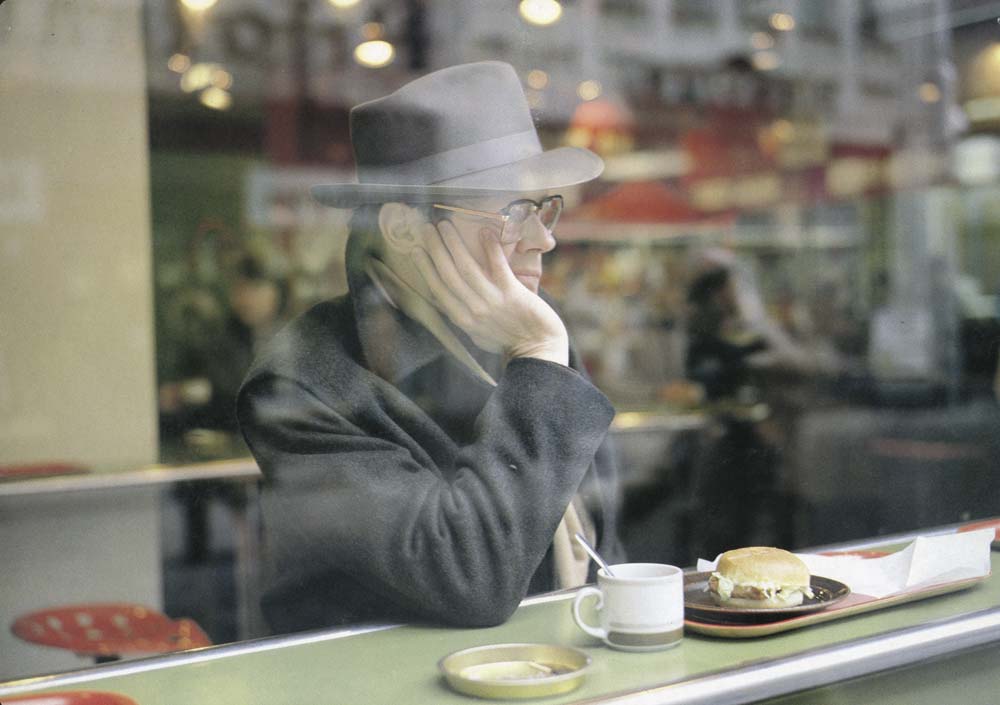
Olli Ruusunen (Antti Litja) in a diner enjoying a small hamburger with a cup of coffee (via). DPs: Pekka Aine & Juha-Veli Äkräs.
The words “world peace” are spoken on Peace Day aka International Day of Peace
Former child prodigy Olli Ruusunen (Antti Litja) has received special brain capacity training at the Buffalo Institute in the US. Paid for by a Finish company, the idea is that Olli will act as a “rationaliser”, drastically overhauling the inner workings of the company. After getting rid of the entire management team, Olli – like others who have gone through the same training program – becomes increasingly strange. Olli decides to disappear.
bales2025filmchallenge
“Film is kijken naar mensen die kijken.”Het gangstermeisje [A Gangstergirl] (Frans Weisz, 1966)
Sep
20
Sophia Loren – 1934
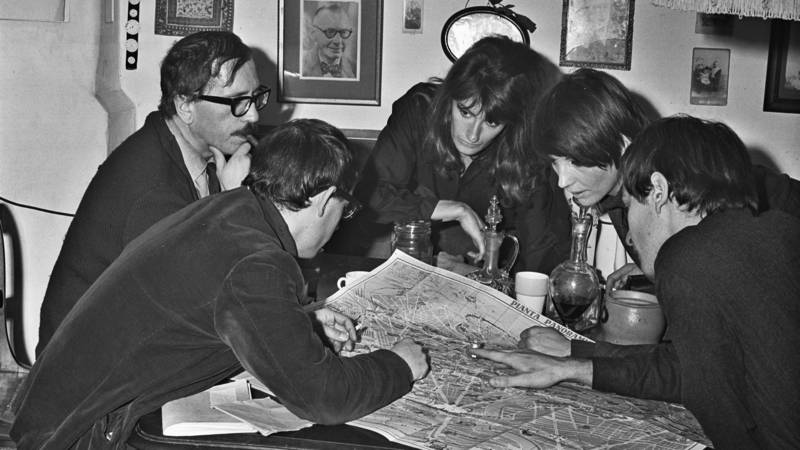
Cast and crew study a map of Rome (via). DP: Gérard Vandenberg.
Italy or Sophia Loren for La Loren's birthday (1934).
– Remco Campert, Het gangstermeisje (1965)
A writer tasked with writing a screenplay based on his novel Het gangstermeisje suffers from writer's block. Some time at his friends' house in France brings the inspiration needed but also a few twists and turns, similar to his book, leading him to Cinecittà.
Smrt si říká Engelchen [Death Is Called Engelchen] (Ján Kadár + Elmar Klos, 1963)
Sep
19
ER – 1994

Pavel (Jan Kačer) recovering face-down in his hospital bed. DP: RudolfMilič.
An emergency room: ER debuts on this date in 1994.
A paralysed Czechoslovak partisan recovering from a shot in the back in an emergency ward, feverishly remembers the events that brought him to that moment. He particularly remembers Engelchen, the SS Sturmbannführer who killed his best friend and massacred the local villagers.
Слънцето и сянката [Slantzeto i syankata / Sun and Shadow] (Rangel Vulchanov, 1962)
Sep
18
National First Love Day
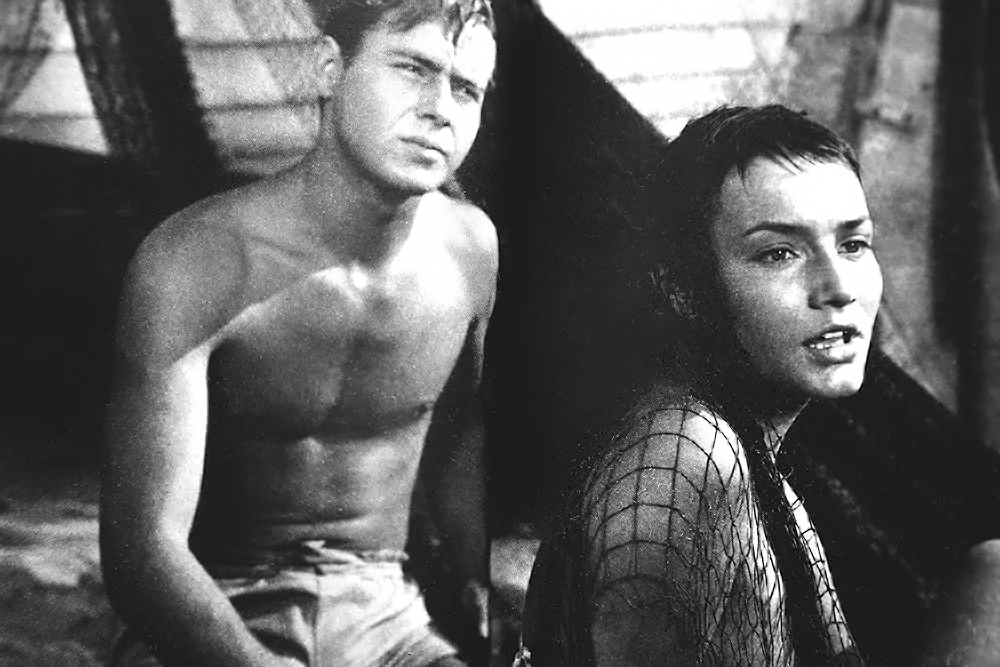
The two young lovers (Georgi Naumov and Anna Prucnal). DP: Dimo Kolarov.
First love for National First Love Day (USA).
A boy and a girl fall in love at a resort at the Black Sea. He's the son of an architect, an optimist who sees creation where possible. She's the daughter of a nuclear scientist, the future an inevitable apocalypse.
– What are you gonna do with tons of apples? They can't be sold! Ask any apple farmer! They just pile up and rot!
– The apple farmers?
– No. The apples!Äppelkriget [The Apple War] (Tage Danielsson, 1971)
Sep
17
National Apple Dumpling Day
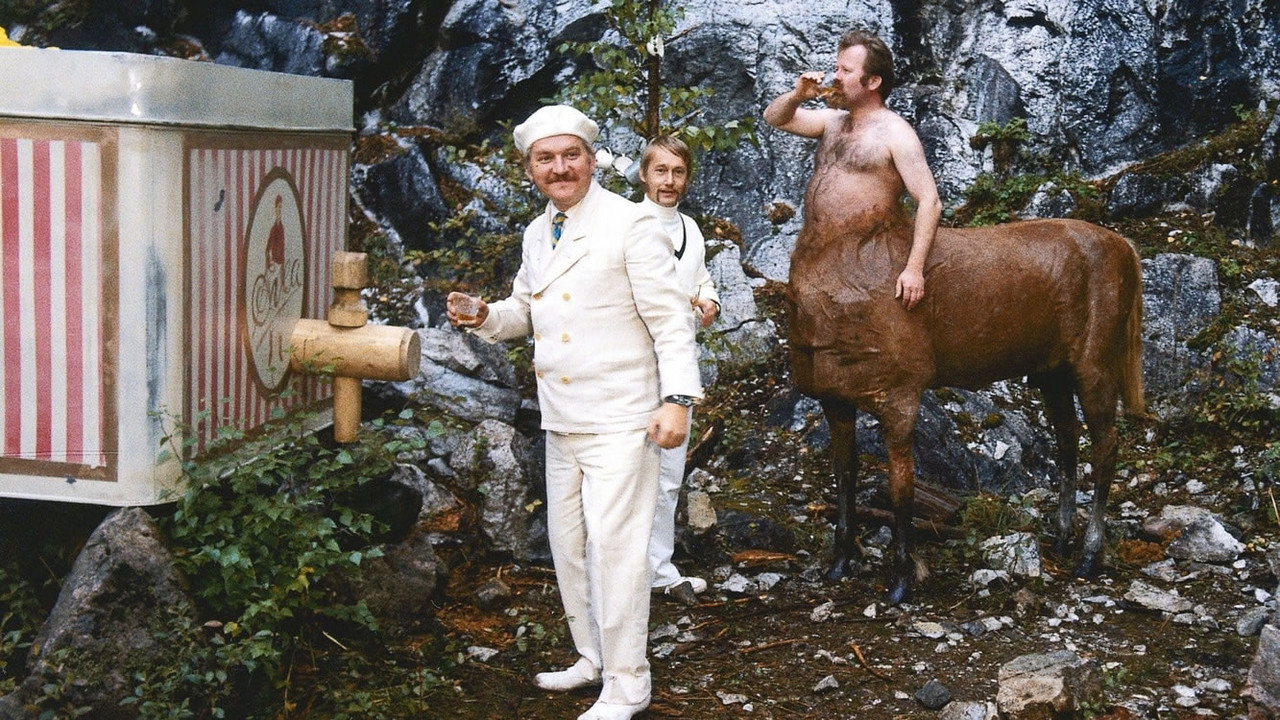
Locals and a centaur – half man, half papier-mâché – enjoy a drink. DP: Lars Swanberg.
Apples, or dumplings, for National Apple Dumpling Day (USA)
A beautiful, picturesque part of Sweden will become… Deutschneyland! At least, that's the brilliant business plan Herr Volkswagner has. But the local apple farmers – a large family that's half human, half mythological creatures – have no need for an amusement park on their grounds.
“¡Mexicanos!
¡Vivan los héroes que nos dieron patria!
¡Viva Hidalgo!
¡Viva Morelos!
¡Viva Josefa Ortiz de Domínguez!
¡Viva Allende!
¡Vivan Aldama y Matamoros!
¡Viva la independencia nacional!
¡Viva México! ¡Viva México! ¡Viva México!”La fórmula secreta [Coca-Cola en la sangre / The Secret Formula] (Rubén Gámez, 1965)
Sep
16
El Grito de Independencia
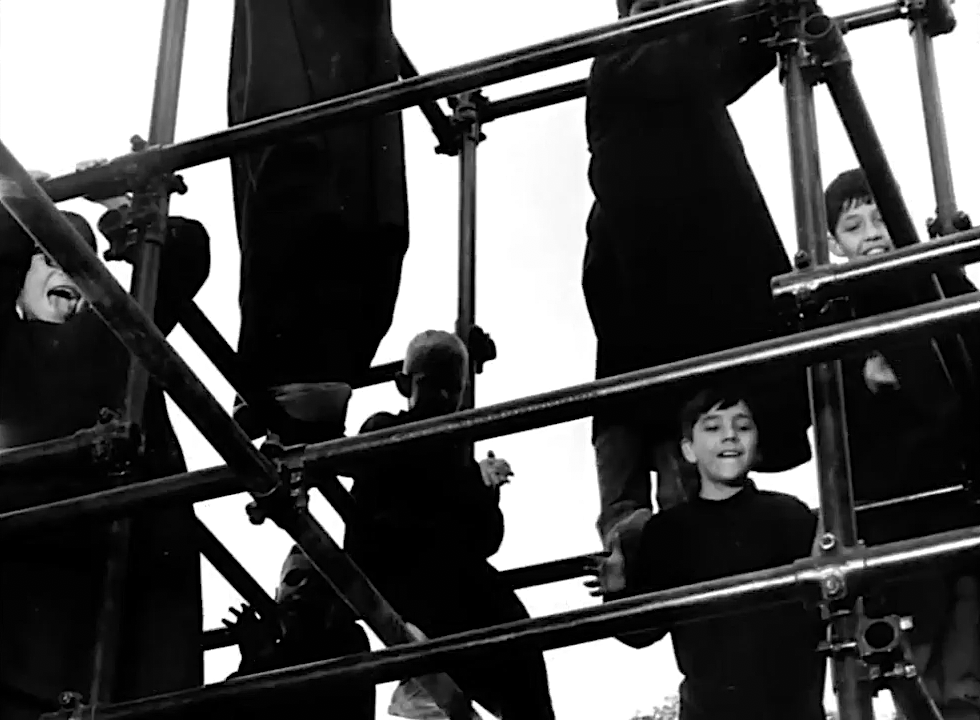
Grinning seminary boys hang from monkey bars. DPs: Salvador Gijón, Rubén Gámez & Segismundo Pérez de Pedro 'Segis'.
El Grito de Independencia: ¡Viva México!
– El Grito
Accompanied by Juan Rulfo's poem, Gámez explores Mexico's identity, and loss thereof. Crying out for the Mexican with Coca-Cola in the blood.
“Stop shooting! Stop democracy!”Hullumeelsus [Безумие / Madness] (Kaljo Kiisk, 1968)
Sep
15
International Day of Democracy

Windisch (Jüri Järvet) pacing, blending in with a white-clad inmate. DP: Anatoliy Zabolotskiy.
On the International Day of Democracy, the word “democracy” is spoken.
– Person Nr. 1
The Gestapo arrives to liquidate the inmates of a mental hospital. Then Windisch, plainclothes Nazi, brings them a letter: there's a special commando hiding amidst the 583 patients. Interrogating them slowly pushes Windisch among them.
“I caused dreams which caused death … this is my crime.”Dead Dreams of Monochrome Men (David Hinton, 1989)
Sep
14
Patrick Swayze – 2009
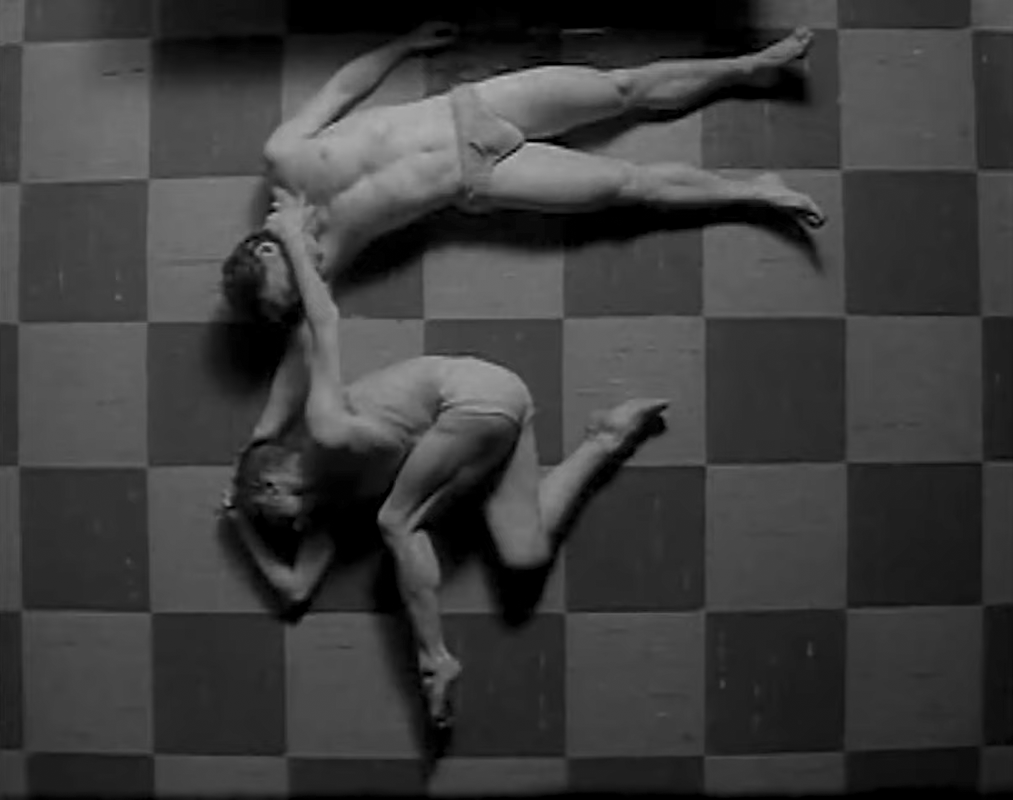
Two of the male dancers performing. They're lying on a black-and-white tiled floor. There's a heaviness to their bodies. DP: Nicholas D. Knowland.
Dancing, or Patrick Swayze who passed away on this date in 2009.
– Dennis Nilsen
Dennis Nilsen was a lonesome, closeted gay man in Thatcher's London, whose desperation lead to multiple horrific killings. He'd ritually bathe and dress the bodies, and held on to them for company. Radical dance troupe DV8's interpretation of Nilsen's transgressions explores the horror of the act in suffocating beauty.
“In all my years of practice, I've never seen anything so sweet. A rosebud.”Sweet Movie (Dušan Makavejev, 1974)
Sep
13
International Chocolate Day
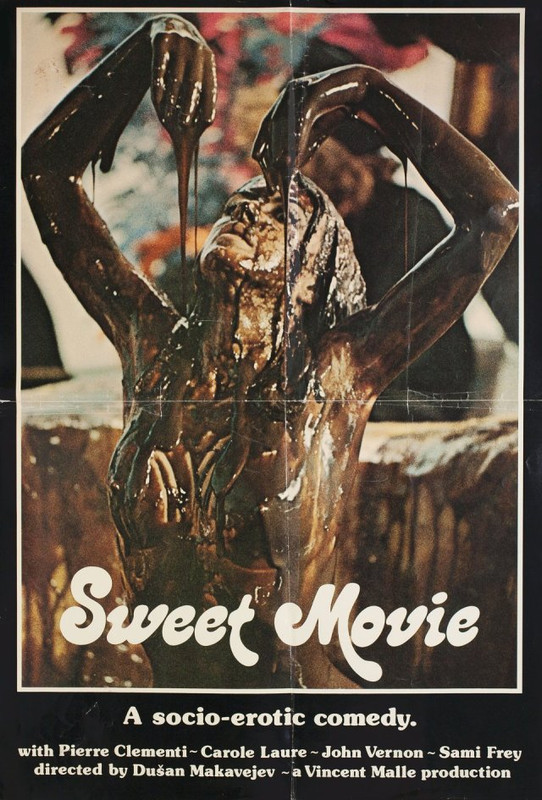
The most virgin, Miss 1984 (Carole Laure), bathing in chocolate. DP: Pierre Lhomme.
Chocolate for International Chocolate Day (Milton S. Hershey's birthday)
– Dr. Mittelfinger
Miss Canada, winner of the “most virgin” contest, escapes her rich, milk tycoon husband into a world of anarchy, lust, and sugar.
“Mars Daughter, You are fine. I am loving you and I should like very much to marry you.”Un matrimonio interplanetario [A Marriage in the Moon] (Enrico Novelli, 1910)
Sep
12
Луна 2 – 1959

Aldovin (director and author of La Colonia Lunare (1908) meets his lovely Martian fiancée halfway, on the Moon.
To commemorate the launch (not landing) of the Луна 2 aka the Second Soviet Cosmic Rocket on September 12, 1959, we present The Moon.
According to Wikipedia, Luna 2 was the first spacecraft to touch the surface of the Moon, and the first human-made object to make contact with another celestial body. Well, Enrico Novelli went there first…
– Aldovin, Terrestrial Astronomer (Aldovin's radiotelegraph to Mars), via
…and what an adventure he had! An Earth gentleman points his telescope at the red planet, only to spot a beautiful Martian princess. He promptly falls in love and lo and behold! it's mutual! That asks for an instantaneous wedding halfway, on the Moon, and nothing can stop them!